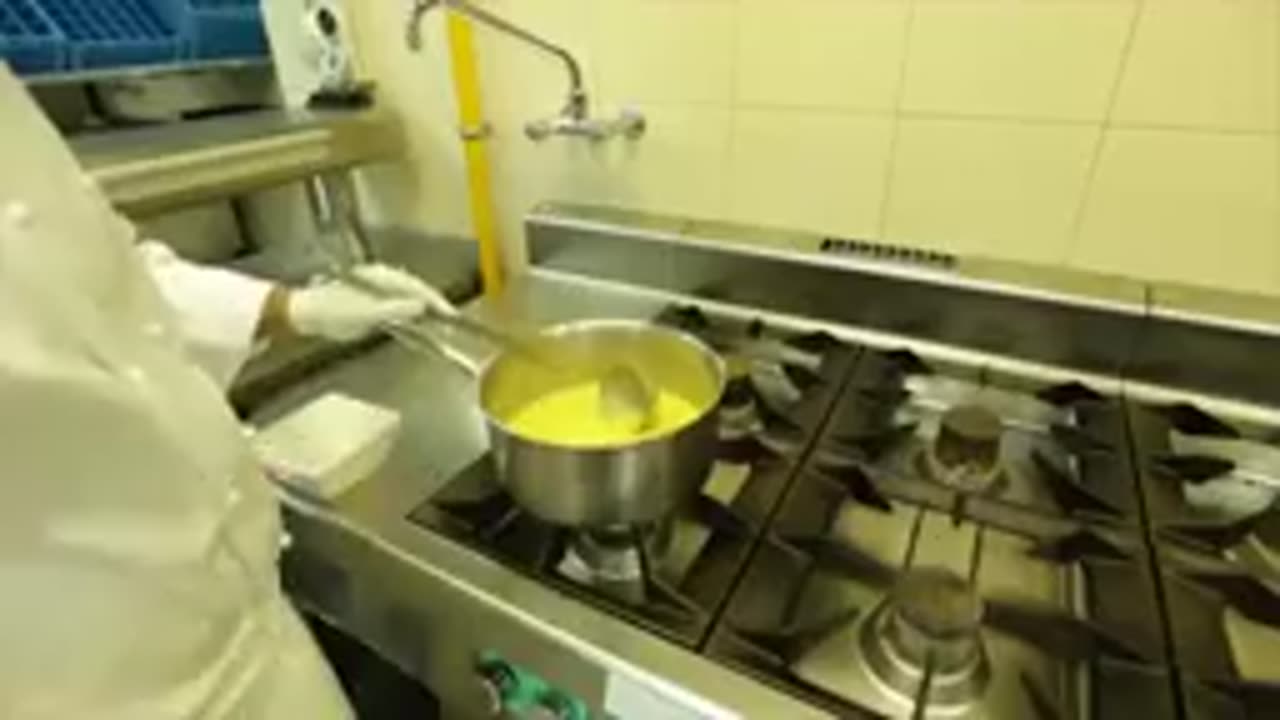Premium Only Content

Cooking, Cooling and Reheating Food (HACCP Lesson - Part 07)
### Cooking, Cooling, and Reheating Food (HACCP Lesson - Part 07)
Cooking, cooling, and reheating food are critical processes in food safety management. Each step must be carefully controlled to prevent the growth of harmful microorganisms and ensure compliance with HACCP principles. This lesson provides an overview of best practices, critical control points (CCPs), and safety measures for these processes.
---
### **1. Cooking**
Cooking is one of the most effective ways to kill foodborne pathogens. Proper temperature control is essential to ensure food safety.
#### **Key Considerations**:
- **Temperature**: Ensure food reaches the required internal temperature to destroy pathogens.
- **Uniformity**: Avoid cold spots by stirring or rotating food during cooking.
- **Critical Limits**: Set specific temperatures and times for different types of food.
#### **Safe Cooking Temperatures** (Internal Temperatures):
- Poultry (whole, ground): **75°C (167°F)**
- Ground meat (e.g., beef, pork): **70°C (158°F)**
- Steaks, chops, roasts: **63°C (145°F)** (with 3-minute rest time)
- Fish and seafood: **63°C (145°F)**
- Eggs: Cook until yolk and white are firm.
- Reheated leftovers: **74°C (165°F)**
#### **Control Measures**:
- Use calibrated thermometers to check internal temperatures.
- Train staff on proper cooking techniques.
- Record temperature checks as part of monitoring procedures.
---
### **2. Cooling**
Improper cooling is a major cause of foodborne illness. Bacteria can grow rapidly when food is left in the temperature danger zone (4°C–60°C or 40°F–140°F).
#### **Cooling Process**:
- Cool food from **60°C to 20°C (140°F to 68°F)** within 2 hours.
- Cool food from **20°C to 5°C (68°F to 41°F)** within the next 4 hours.
#### **Key Considerations**:
- Use shallow containers to increase surface area for heat dissipation.
- Avoid stacking containers while cooling.
- Monitor cooling times and temperatures.
#### **Control Measures**:
- Use blast chillers for rapid cooling.
- Place containers in ice baths to expedite cooling.
- Ensure proper airflow in refrigeration units.
- Verify cooling temperatures with thermometers.
---
### **3. Reheating**
Reheating must bring food quickly to a temperature that kills bacteria that may have grown during storage.
#### **Key Considerations**:
- Reheat food to at least **74°C (165°F)** within 2 hours.
- Do not reheat food more than once.
#### **Reheating Process**:
- Use equipment designed for rapid heating (e.g., ovens, microwaves, stovetops).
- Avoid slow warming methods like bain-marie setups for reheating.
#### **Control Measures**:
- Stir food regularly to distribute heat evenly.
- Use thermometers to verify temperatures.
- Discard any food that has not reached the safe reheating temperature within 2 hours.
---
### **4. Common Hazards**
#### **Biological Hazards**:
- **Cooking**: Undercooking may leave pathogens like *Salmonella* or *E. coli* alive.
- **Cooling**: Slow cooling allows bacteria like *Clostridium perfringens* or *Bacillus cereus* to grow.
- **Reheating**: Insufficient reheating may fail to kill pathogens.
#### **Physical Hazards**:
- Improper handling of equipment or utensils can introduce contaminants.
#### **Chemical Hazards**:
- Improper cleaning of cooking or reheating equipment may leave chemical residues.
---
### **5. Critical Control Points (CCPs)**
| **Step** | **CCP** | **Critical Limits** | **Monitoring** | **Corrective Action** |
|-----------------|----------------------------------|-------------------------------------------------|--------------------------|---------------------------------------------------------|
| **Cooking** | Internal temperature | Meet safe cooking temperatures for each food. | Use food thermometers. | Continue cooking to reach required temperature. |
| **Cooling** | Cooling rate | Cool to 5°C (41°F) within 6 hours. | Monitor with timers and thermometers. | Reheat and start cooling process again. |
| **Reheating** | Final reheating temperature | Heat to 74°C (165°F) within 2 hours. | Check temperature with a thermometer. | Discard food if reheating fails. |
---
### **6. Record Keeping**
- Maintain logs for cooking, cooling, and reheating processes.
- Record:
- Date, time, and temperature of food.
- Corrective actions taken for any deviations.
---
### **7. Equipment and Tools**
- **Cooking**: Ovens, grills, stovetops, thermometers.
- **Cooling**: Blast chillers, shallow pans, ice baths.
- **Reheating**: Microwaves, ovens, stovetops.
---
### **8. Training and Supervision**
- Train staff on:
- Correct temperature measurement techniques.
- Handling food safely during each step.
- Supervisors should verify compliance with procedures.
---
### **9. Verification**
- Conduct regular audits of cooking, cooling, and reheating processes.
- Test food samples for microbial safety as part of validation procedures.
---
### **Conclusion**
Cooking, cooling, and reheating are essential processes in food safety management. By adhering to HACCP principles, maintaining proper temperatures, and implementing effective monitoring, you can minimize the risk of foodborne illnesses and ensure food safety.
Would you like a visual flowchart or a checklist for these processes?
-
 38:41
38:41
MYLUNCHBREAK CHANNEL PAGE
1 day agoTimeline Begins in 1800? - Pt 1 & 2
27.9K19 -
 1:23:41
1:23:41
Game On!
20 hours ago $7.58 earnedNetflix NFL Christmas Games Preview and Predictions!
41.5K9 -
 2:05:07
2:05:07
Darkhorse Podcast
1 day agoWhy Trump Wants Greenland: The 257th Evolutionary Lens with Bret Weinstein and Heather Heying
282K443 -
 8:50:58
8:50:58
Right Side Broadcasting Network
1 day ago🎅 LIVE: Tracking Santa on Christmas Eve 2024 NORAD Santa Tracker 🎅
302K44 -
 2:48
2:48
Steven Crowder
1 day agoCROWDER CLASSICS: What’s This? | Nightmare Before Kwanzaa (Nightmare Before Christmas Parody)
292K12 -
 33:49
33:49
Quite Frankly
1 day agoThe Christmas Eve Midnight Telethon
102K22 -
 2:12:46
2:12:46
Price of Reason
23 hours agoAmber Heard BACKS Blake Lively Lawsuit Against Justin Baldoni! Is Disney CEO Bob Iger in TROUBLE?
60.9K24 -
 1:01:17
1:01:17
The StoneZONE with Roger Stone
18 hours agoChristmas Edition: Why the Panama Canal is Part of the America First Agenda | The StoneZONE
127K47 -
 18:12:15
18:12:15
LFA TV
1 day agoLFA TV CHRISTMAS EVE REPLAY
145K19 -
 13:32
13:32
Scammer Payback
19 hours agoChanging the Scammer's Desktop Background to his Location
12.2K3